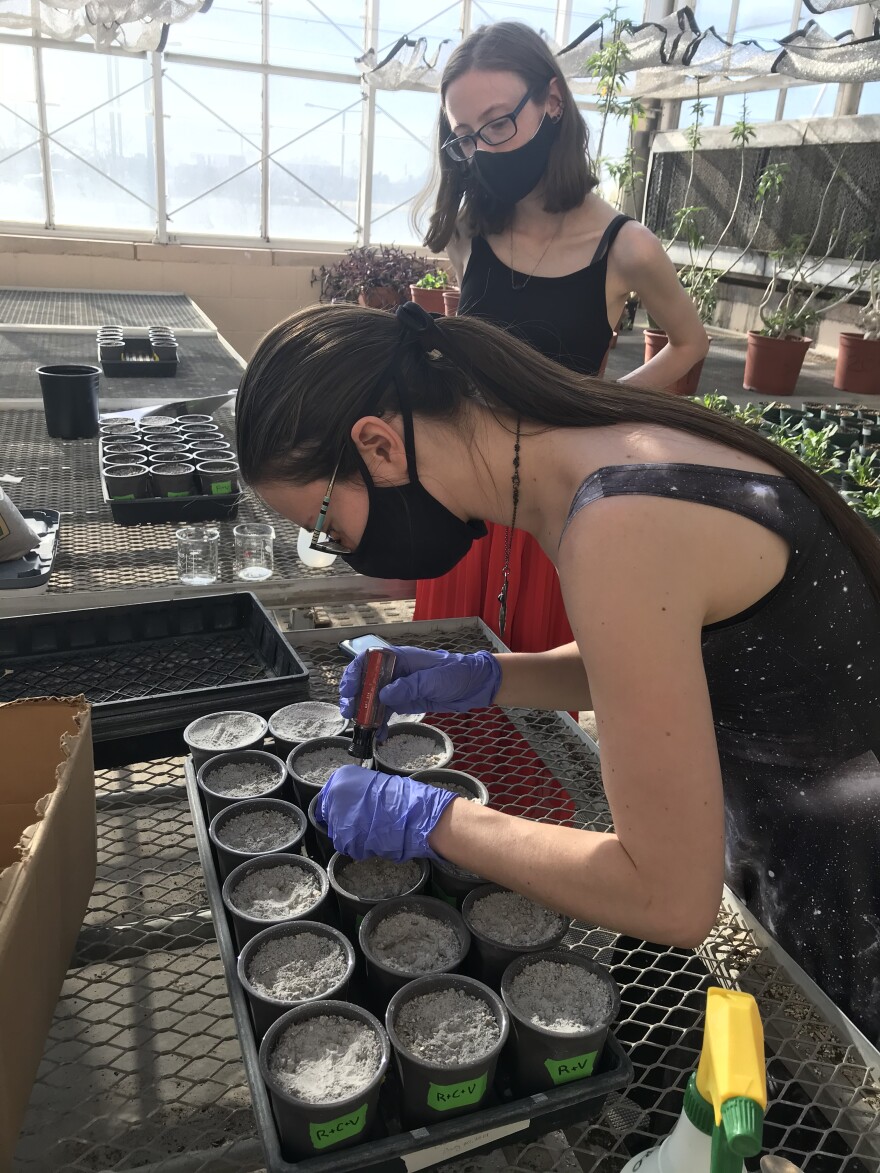New Mexico State University students and faculty from various departments and colleges came together in a cross-collaborative project to successfully grow crops– but not just in any soil you can find in your backyard.
As part of NASA’s “Plant the Moon Challenge,” their team, named “Zia Luna,” experimented to see what crops could grow on moon soil simulant to identify potential food sources that can be grown on the moon for future human space missions.
NASA created the “Plant the Moon Challenge,” which is open to all ages and backgrounds across the country, as a global science experiment to give anyone interested a chance to be a part of the next frontier.
“I feel really honored that I was part of such an interesting and futuristic project with an amazing group,” said team member Jessica Bennett, a junior majoring in biology and minoring in biochemistry in the College of Arts and Sciences. “I wanted to grab the great opportunity to participate in the challenge when it knocked on my door.”
Adriana Romero-Olivares, assistant professor of biology, Nicole Pietrasiak and April Ulery, soil science professors, mentored graduate students Mikaela Hoellrich and Jessica Mikenas, who led the collaborative project.
“As a graduate student, I thought it would be a great way to do some interesting side research as well as work on my leadership and organizational skills,” Mikenas said.
Bennett, along with seven other undergraduate students from various departments, participated in daily tasks such as watering the plants, monitoring their growth and collecting data. Team members included: Jessica Bennett, a biology and biochemistry major; Sandy Arce, a biology major; Christy Vasquez, a biology major; Nicholas Luke, an environmental science major;
Taylor Watson, an environmental science major; Daniela Palacios, a chemicals and material engineering major; and Maya Gabitzsch, a biology and environmental sciences major.
The team decided to experiment by growing mushrooms beans and green onions in the moon soil simulant. Hoellrich and Mikenas, research assistants in the College of Agricultural, Consumer and Environmental Sciences, led the team’s lab.
“We worked together to lead our weekly team meetings, coordinate having students come into the lab to run tests on the simulated lunar regolith and scheduled when the undergrads would come into the greenhouse to water or measure growth of our plants and mushrooms,” Mikenas said.
“Our team leaders and mentors were so patient with explaining everything to us and I couldn't be more grateful,” Bennett said. “They did not just educate and guide me but also made sure I was part of the team.”
However, the process to grow the mushrooms and plants on the moon-like rock substrate was not easy. The team had to conduct many tests in the beginning to understand what the lunar simulant properties were, including water holding capacity, its pH, its density, chemistry and more.
“Once we had a better understanding of the lunar simulant was like, we chose other substrates to add to make it more welcoming to plants and mushrooms, like wood chips, vermiculite, compost, and fertilizer,” Romero-Olivares said. Depending on the crop, the team faced different challenges they needed to overcome to grow the plants successfully.
“Although complex, I think all of us improved at thinking on our feet and adapting our plans to changing situations,” Mikenas said. “We were able to alter and agree on adjustments to things like sample size, growth pot volume and other factors to keep the experiment moving forward and ultimately getting cool results.”
When it was time to harvest their experimental plants, students collected samples and recorded the data to include in their final report, which they submitted to NASA. They found beans and onions had a harder time growing but the mushrooms did relatively well with a specific mix of wood chips, wheat bran and gypsum.
For Bennett as an undergraduate, the firsthand research experience working with students in different majors opened her eyes to the benefits of collaborative research.
“The diversity of our team made me realize that research does not just require one specific group of professions,” Bennett said. “It was fun to make connections with people that are in different fields of profession and it’s fascinating how our interests could bring us all together.”
Team “Zia Luna” will be part of the new spring 2022 NASA “Plant the Moon” challenge to continue the progress they made and this time also experimenting growing plants on Mars simulants.
Information from NMSU


